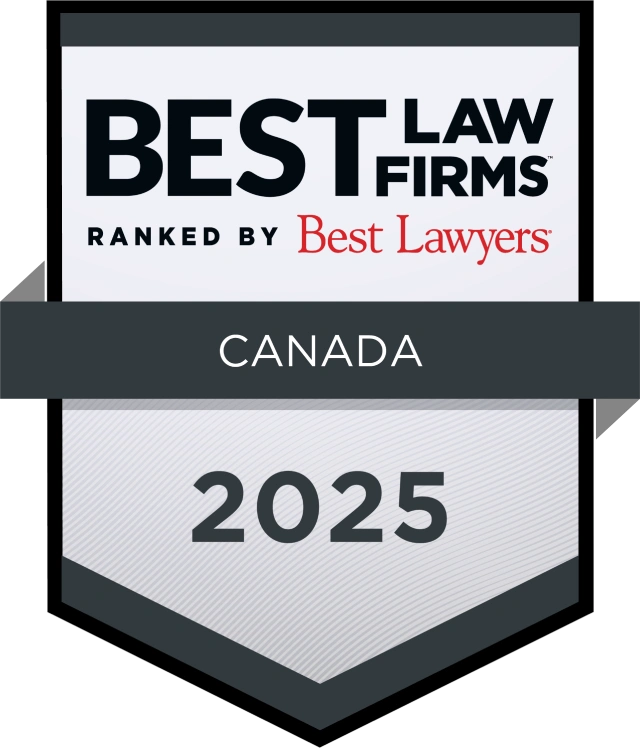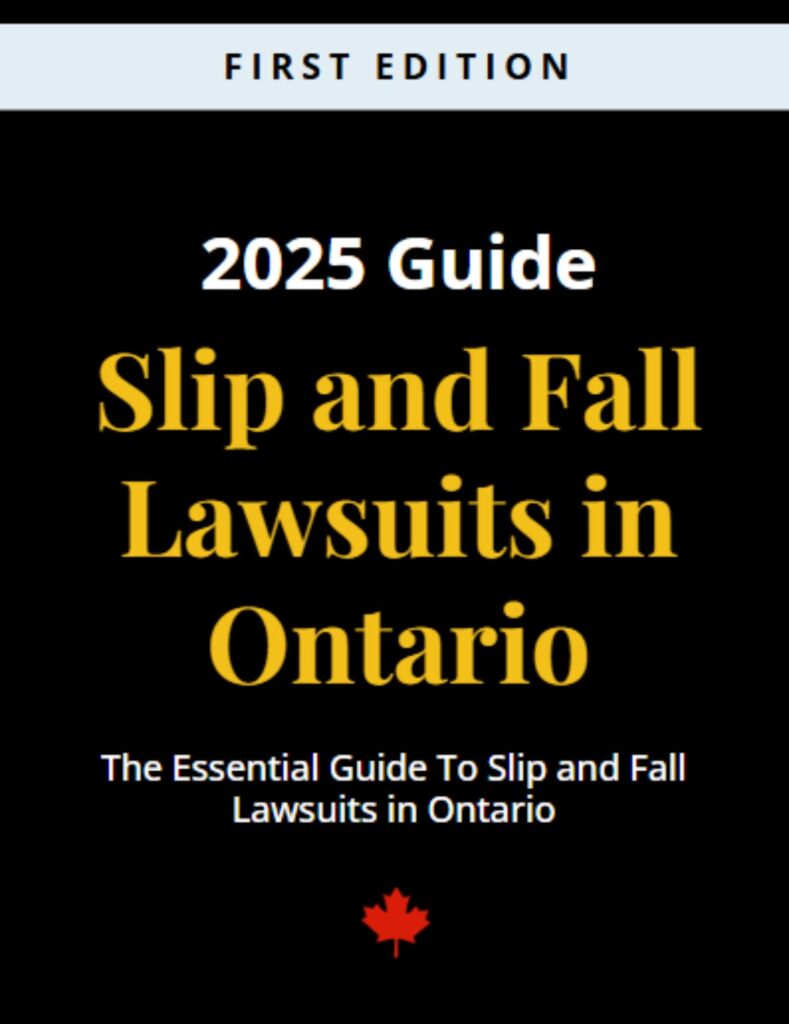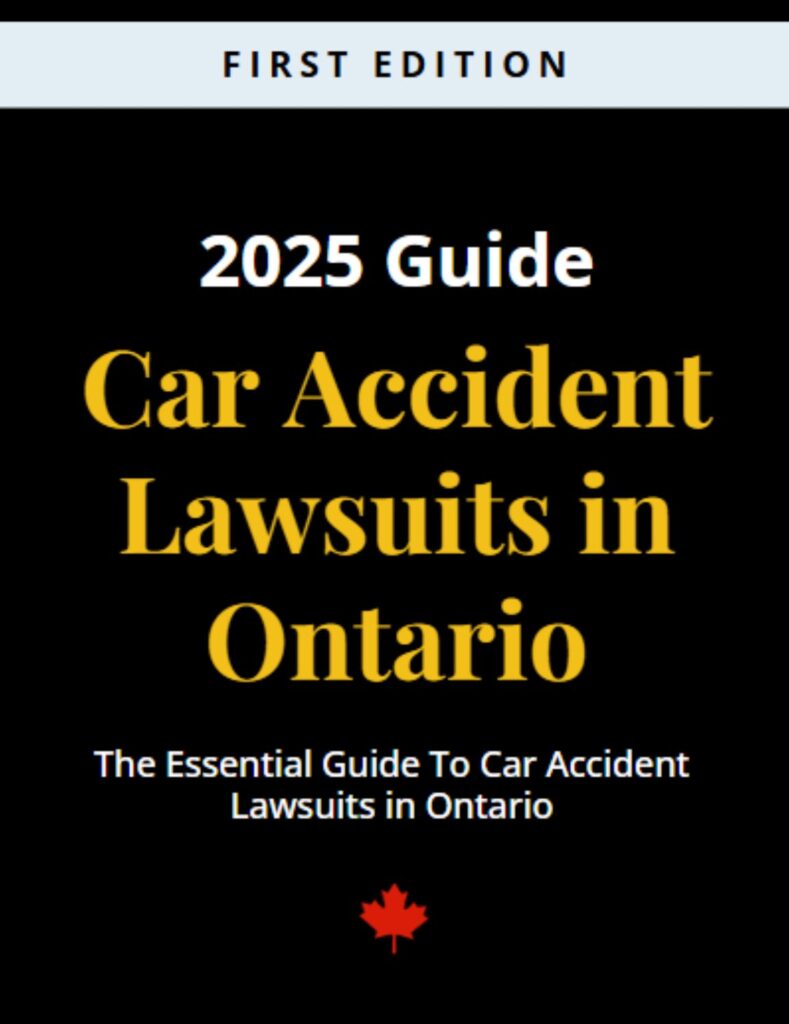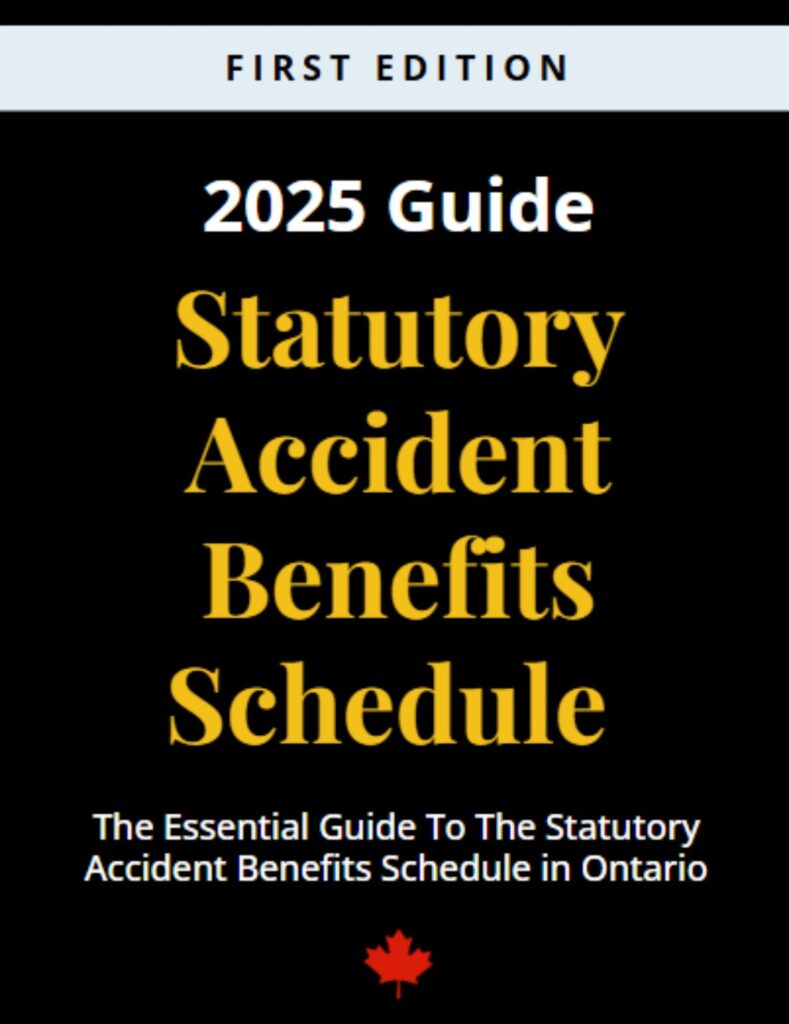Barrie Tissue And Muscle Damage Lawyer
Find out if you have a case today.
Contact our Barrie personal injury lawyers for a free consultation if you have legal questions regarding your personal injury claim.
Table of Contents
As bad as a broken bone sounds, some of the worst injuries are not to the bones at all, but to the muscles, tendons, skin, and cartilage. None of these tissues has a straightforward healing process, and unlike bone that can be immobilized by a cast, many types of tendon and muscle injuries cannot even be braced. For example, there is no cast for a serious upper back strain. Deep and extensive skin lacerations may heal in time, but not without permanent scarring and disfigurement. An Achilles tendon may never get back to full strength after a rupture. The tremendous pain and suffering, not to mention permanent impairment and potential disability that victims of traffic collisions, slip and falls, medical malpractice, and ATV accidents are subjected to should not be ignored by the negligent party or devalued by their insurer. The Barrie tissue and muscle damage lawyers at the law offices of Preszler Injury Lawyers are here to help you file a personal injury claim against the at-fault party.
Time To Heal And The Degree Of Healing Have Much To Do With The Type Of Tissue That Is Injured
There are three categories of tissue that can be damaged during a traffic collision, slip and fall, medical error, or other unintentional incident. These include damage to the skin, damage to the muscle, or damage to cartilage or tendon. The healing rate of an injury depends on many factors, including blood flow. The more blood that can be circulated to the injured area, the more quickly and completely that injury will heal. Blood delivers necessary nutrients and oxygen to the damaged tissue, allowing for repair and regrowth of new tissue. For example, because there is so much blood flow to the skin, a deep laceration that cuts through all skin layers will heal relatively quickly, though scarring may leave a lasting mark. Muscles also have good blood flow, allowing them repair in a relatively short amount of time following in injury or rehabilitative surgery. On the farthest end of the spectrum from skin is tendon. Even bones have more blood supply than tendons. A torn muscle may regain full strength, depending on the severity of the injury, while a torn tendon (or ligament) may never regain full mobility or strength. Tendons hold muscles onto bones and cartilage acts as a cushioning mechanism between joints so that bones do not rub against one another. Both tendons and cartilage have relatively weak blood flow, which means that injuries to these types of soft tissue take longer to heal, and they generally heal less fully.
LET US PUT OUR EXPERTISE TO WORK FOR YOU
Tell Us What Happened
Since 1959, we’ve helped thousands of Canadians get the compensation they deserve with their personal injury claims. One of Canada’s oldest personal injury law firms, personal injury law is exclusively what we do. Book a free consultation today with our top-rated personal injury lawyers.
Our team is available 24/7 to speak with you.

Common Types Of Tissue And Muscle Injuries
- Whiplash—The most common injury that traffic collision victims suffer is whiplash, which is often in conjunction with other soft tissue injuries. Whiplash occurs when the head rocks back and forth violently with sudden acceleration or deceleration. This impact tears muscles and tendons within the neck, causing pain and stiffness within the upper back, the neck, and up toward the base of the skull. Victims of whiplash generally suffer from severe headaches, nausea, immobility of the head and neck, and pain all the way from the head down into the upper arms and back. Whiplash can last from weeks, months, or years depending on the severity of the injury and complications.
- Back Injuries—Every body movement reverberates, painfully, to the back for those with any type of back injury. Back pain is one of the leading injuries in Canada, and four out of five Canadians will experience some degree of chronic back pain at some point in their lives, according to Statistics Canada. Back pain may initially be caused by actual damage to the tissue, such as a muscle or tendon, but the pain may linger even after the tissue has healed. A few common types of soft tissue damage to the back include the following:
- Bulging Disc—The spinal column is made up of vertebrae separated by spongy pads called discs. These discs are filled with fluid and act as shock absorbers, attachment points that hold the vertebrae together, and joints that allow the spine to bend. A sudden impact can cause a disc to bulge out from between two boney vertebrae, being pinched and causing serious pain and immobility.
- Herniated Disc—When an impact or movement, such as a slip and fall, causes enough damage to a disc, it will herniate, or rupture. This causes tremendous pain and immobility for the victim.
- Muscle Strains—The back is lined with dozens of muscles within the back, and when one gets strained, the patient is sure to take notice. Back muscle strains take a long time to heal because immobilizing the back is virtually impossible. A muscle strain may take weeks or months to heal but leave the patient with chronic back pain that lasts years or a lifetime.
- Torn ACL Tendon—The ACL tendon (anterior cruciate ligament) runs inside the knee joint, keeping the tibia in place and providing rotational stability for the knee, according to EMedicineHealth. The ACL tendon is often ruptured during slip and falls and traffic collisions. When the front end of a car is involved in a crash, the crumple zone extends into the occupants’ leg region, as the engine is pushed inwards into the dashboard, which inevitably makes contact with the driver’s and front passenger’s knees. ACL tears require extensive surgery and rehabilitation. The meniscus, which is another tendon in the knee that acts as a shock absorber, is also usually damaged when the ACL gets torn, and also requires surgery to fix.
What Are Common Serious Soft Tissue Injuries?
Other serious soft tissue injuries include the following:
- Torn Quadriceps Tendon
- Extensive Contusions
- Facial Lacerations and Disfigurement
- Permanent Scarring
- Road Rash
- Deep Lacerations
- Torn Muscles of the Shoulder, Hip, or Other Major Joint
- Torn Intercostal in Conjunction With a Chest or Rib Impact
- Torn Labrum of the Hip or Shoulder
- Torn MCL
- Tendon and Joint Sprains and Strains Such as Sprained Ankle or Wrist
Call Preszler Injury Lawyers For Help Today
If you are the victim of another party’s negligence, you deserve to be compensated for your pain and suffering, past and future medical expenses, lost wages and lost earning capacity, and much more. Call Preszler Injury Lawyers by dialing 1-800-JUSTICE today for a free consultation with a tissue and muscle damage lawyer in Barrie.
Do you live in Barrie? Here’s how we can help:
Proudly Canadian
Award Winning Personal Injury Law Firm
We are proud to be one of Canada’s oldest and long-standing personal injury law firms. Since 1959, we have been providing exceptional legal services and have established ourselves as leading personal injury lawyers in the Canadian legal community. It’s not just the awards that recognize our achievements, but also the wins we’ve achieved for thousands of Canadians with their personal injury claims.
More personal injury Topics
Here’s more information on personal injury related topics that we think you might find helpful.

personal injury
|
January 23, 2024
Injured as a Worker in Ontario? A WSIB Claim Isn’t Necessarily Your Best— Or Only— Option
In Ontario, the compensation of workers who sustain injuries or illnesses in the course of their employment is governed by the Workplace Safety and Insurance…

personal injury
|
December 7, 2023
Does a Child Have the Right to Sue for Personal Injury?
As much as parents and guardians do everything they can to keep children safe and protected from dangerous situations, there are occasions when a child…

personal injury
|
October 10, 2023
Gain Peace of Mind Through a Structured Settlement
The phrase “structure binds anxiety” is often used by psychologists to help people suffering from anxious feelings and intrusive thoughts. This maxim’s aim is to…
More personal injury Video Resources
We also have some videos on the topic of personal injury claims
personal injury FAQs
Here are some commonly asked questions for personal injury claims
What does a lawsuit look like?
Every personal injury lawsuit is generally comprised of five main parts. The length of time each part takes can vary depending on the complexity of your case. Your lawyer will help you through each stage by providing tailored advice and strong legal representation.
You can expect:
- Statement of Claim: This is a formal document that initiates the personal injury claim against the at-fault party (or individual you are suing).
- Examination for Discovery: This is a meeting where you and your lawyer will ask the opposing party questions about the claim, the accident, fault, and anything else that is deemed relevant. The opposing party will also have the opportunity to ask you questions.
- Gathering of Evidence: Your legal team will gather a variety of evidence on your behalf to strengthen your claim. This might include medical records, police reports, images from the accident scene, witness testimony, expert opinions, and more.
- Mediation: If you would like to attempt to settle without going to trial, you will likely undertake mediation. Mediation involves you and the opposing party negotiating the terms of your settlement with the assistance of a neutral third party.
- Trial: If you are unable to reach a settlement during mediation, your claim will proceed to trial. During trial, your lawyer will present your case and the evidence they have gathered before a judge (and sometimes a jury). Once complete, the judge will decide the final amount of compensation you’re entitled to.
It’s important to note that a majority of personal injury claims are settled through mediation, out of court. Our Toronto personal injury lawyers help guide clients through each of these stages, so they don’t have to navigate the legal complexities alone.
How much will I have to pay for lawyers’ fees?
Our personal injury lawyers work on a contingency-fee basis, meaning we only get paid if you win your case. A percentage of the settlement you receive will go towards lawyers’ fees. There are no upfront, out-of-pocket payments required.
What type of compensation can I expect to get?
When you’re injured in an accident due to someone else’s negligence, there are many different types of compensation you may be eligible to receive. The amount and kind will depend on the severity of your injury and the specifics of your case.
Common damages you might claim include:
- Pain and suffering
- Out-of-pocket expenses
- Loss of income
- Housekeeping losses
- Medical costs
- Legal costs
- And more
Our experienced Toronto personal injury attorneys will help maximize what you can recover by exploring your case and eligibility in depth. We aim to ensure that the compensation you receive reflects not only your current suffering, but the lifelong effects that your accident may have in the future.
When can I sue for non-pecuniary general damages (e.g. pain and suffering, loss of enjoyment of life, etc.)?
In Ontario, you can sue for non-pecuniary damages if you have suffered a permanent and serious impairment of an important physical, mental, or psychological function, or permanent, serious disfigurement. This is known as the “threshold.” If you meet this threshold, you can sue for general damages such as pain and suffering, loss of enjoyment of life, and other similar losses.
How long will it take to settle my case?
The length of time it takes to settle a case depends on several factors, including the complexity of the case, the extent of your injuries, and whether the other parties involved are willing to settle. Some cases can be settled in a few months, while others can take years.
How long will the process take?
The length of time a personal injury claim can take varies widely according to the specifics of your case. While some cases settle in a matter of months, some can take anywhere from two to four years.
Some factors that affect the duration of personal injury claims include:
- Complexity of your injuries
- Each party’s willingness to settle
- Whether a claim goes to court
- Insurance company cooperation
- Availability of evidence
- And more
When liability is clear or injuries/damages are more clearly documented, cases may move faster. A personal injury lawyer will make sure the process keeps moving, although sometimes delays (like court backlogs) are unavoidable. Seeking personal injury legal advice early may help you streamline your timeline.
How long do I have to sue?
In Ontario, generally speaking you have two years from the date of your injury-causing accident to file a claim. However, based on the circumstances of your individual case, this timeline could be subject to additional limitations.
Do I have a strong case?
After taking advantage of a free initial consultation with our personal injury lawyers, the strength of your case can be evaluated based on the evidence available and the specific circumstances of your accident. Our personal injury lawyers offer case-specific legal feedback to help you understand the strengths and weaknesses of your case and advise you on legal options that might be available.
Got more questions?
If you have more questions or need legal help regarding personal injury claims, contact our legal team for help.
We’re happy to help.
INJURED IN AN ACCIDENT IN Barrie?
Book a FREE Consultation
With Our Legal Team Today
Our phone lines are available 24/7
During your free consultation you will find out if you have a case worth pursuing as well as answers to any legal questions you may have.






